Embarking on a backpacking trip can be both exhilarating and daunting. Whether you’re a seasoned traveler or a novice adventurer, having a well-organized backpacking checklist is crucial for a successful journey.
This comprehensive guide will cover everything you need to know about preparing your backpack and ensuring you don’t forget any essentials.
Contents
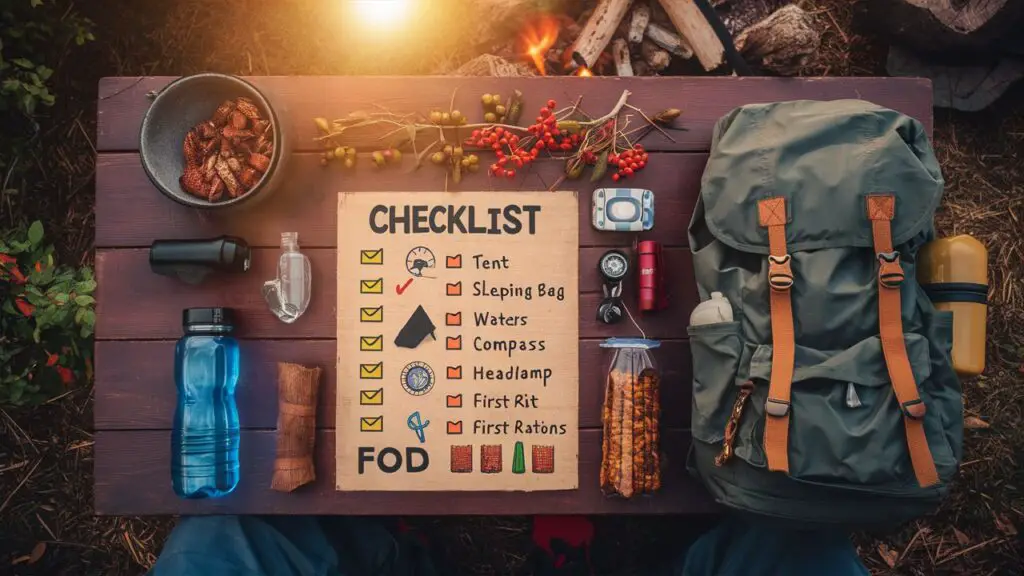
Why You Need a Backpacking Checklist
A backpacking checklist is more than just a list; it’s a safety net for your adventure. It ensures you’re fully prepared for the journey ahead, helping you stay organized and focused.
The process of creating a checklist allows you to carefully consider each item’s purpose and necessity, preventing overpacking or forgetting crucial gear.
Imagine heading out on a week-long trek only to realize you’ve forgotten your sleeping bag. The consequences could range from uncomfortable nights to serious health risks in colder climates.
A good checklist mitigates such risks, streamlining your preparation and allowing you to focus on the adventure itself.
Furthermore, a comprehensive backpacking checklist saves you time and money, ensuring that you don’t need to make last-minute purchases for forgotten items.
Remember, each trip may have unique requirements based on the destination’s climate, terrain, and duration. So, always tailor your backpacking checklist to suit the specifics of your journey.
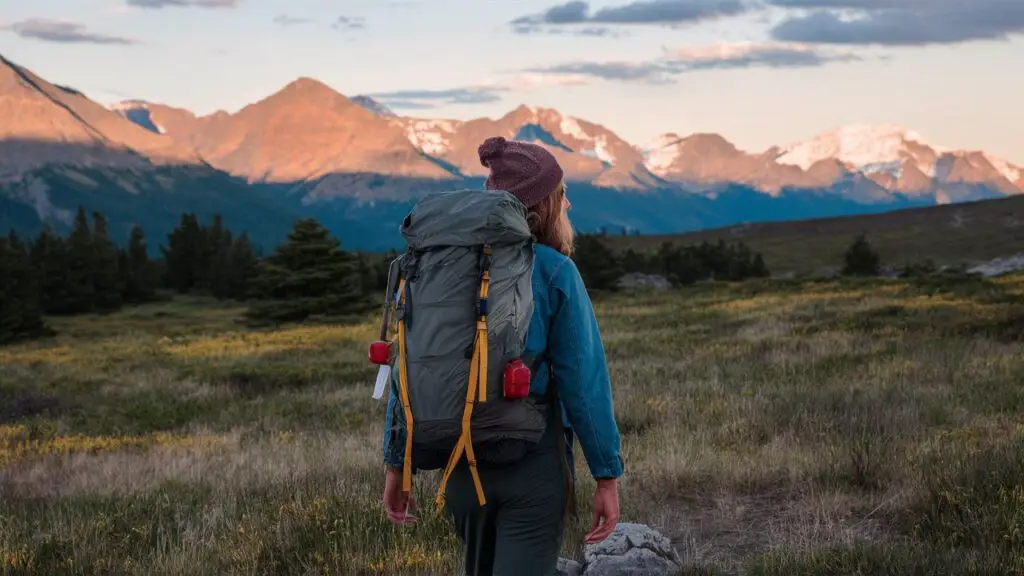
Backpacking Checklist: The Basics
Every successful backpacking adventure begins with nailing down the basics. These fundamentals act as the backbone of your preparation, ensuring you have all essential items for survival and general comfort.
- Backpack: Choose one with adequate capacity (30-50 liters for shorter trips, 50+ liters for longer treks), good back support, and multiple compartments for organization.
- Shelter: A tent, bivy sack, or hammock depending on your comfort preference and trip duration.
- Sleeping Bag and Pad: Opt for a sleeping bag suited to the expected temperatures and a pad for insulation and comfort.
- Cooking Gear: Portable stove, fuel, lightweight cookware, utensils.
When developing your backpacking checklist, remember these basics as the foundation. They are essential regardless of your destination.
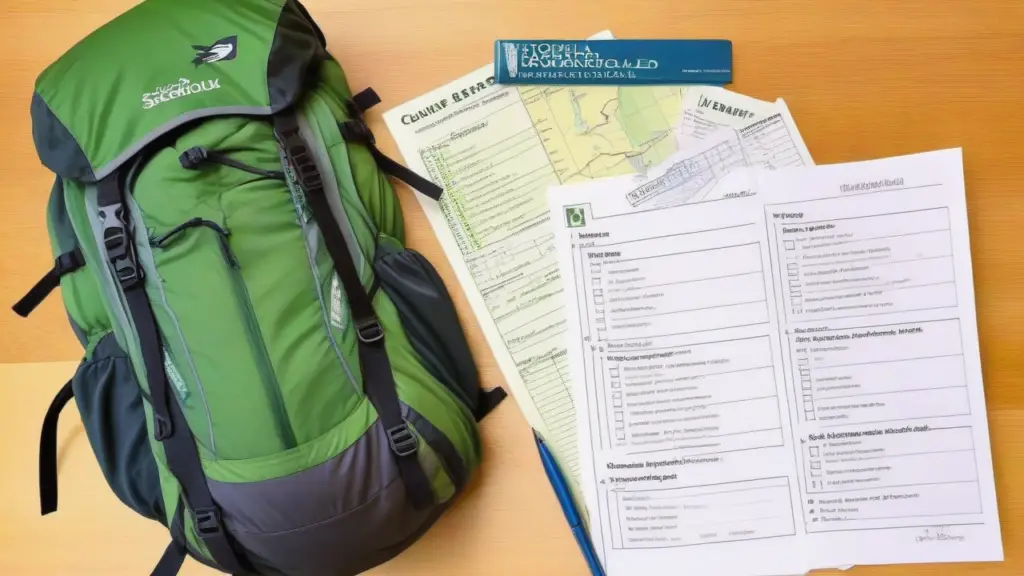
Essential Gear for Your Backpack
Backpack
The selection of a backpack is a crucial step in your checklist. The ideal backpack should be durable, waterproof, and appropriate for the duration of your journey.
Look for models with adjustable straps, padded hip belts, and ventilated back panels.
Capacity Recommendations:
- Day Hikes: 20-30 liters
- Weekend Trips: 30-50 liters
- Extended Trips: 50-70 liters
A well-fitted backpack can make a big difference in comfort and convenience. Ensure the weight is evenly distributed and that the backpack sits comfortably on your hips.
Sleeping Bag and Sleeping Pad
A good night’s sleep is essential for maintaining energy levels on the trail. Choose a sleeping bag based on the lowest expected temperature in your camping area. Consider the sleeping bag’s weight and compressibility.
Types of Sleeping Bags:
- Synthetic Sleeping Bags: Affordable, quick-drying, and durable.
- Down Sleeping Bags: Lightweight, compact, and excellent insulation.
A sleeping pad adds comfort and insulation, protecting you from the cold ground. Foam pads are lightweight and reliable, while inflatable pads offer more comfort but require careful handling.
Tent or Shelter
Your shelter is your home away from home. Choose a tent or other shelter based on the environmental conditions you’ll face. Look for features like waterproofing, ease of setup, and adequate ventilation.
- Ultralight Tents: Ideal for experienced backpackers looking to minimize weight.
- Double-Wall Tents: Provide better condensation control and protection from the elements.
- Hammocks and Bivy Sacks: Good for minimal setups and moderate climates.
Invest in a high-quality tent that can withstand the challenges of your specific environment.
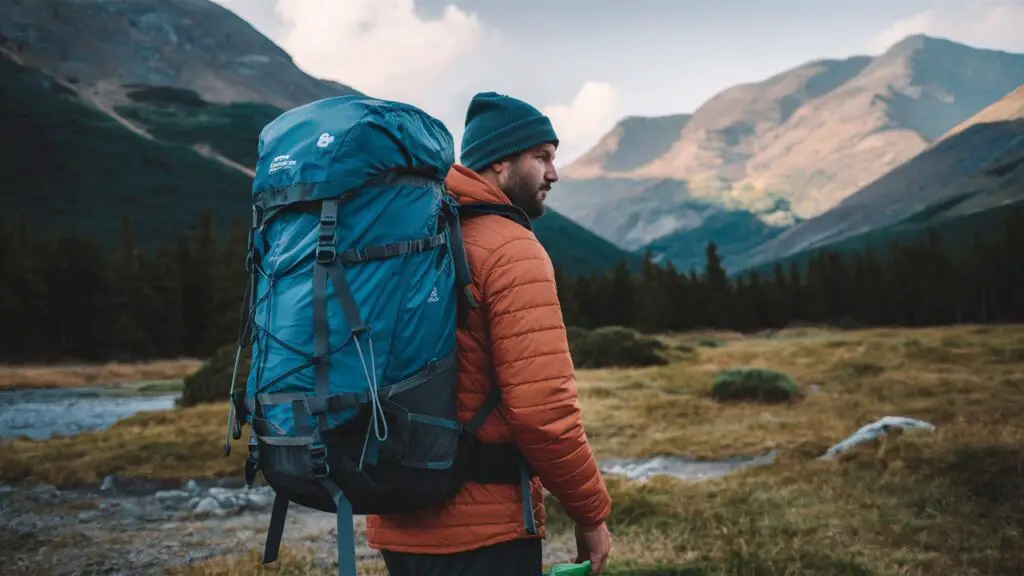
Clothing Essentials
Layering System
A layering system is crucial for regulating body temperature and staying comfortable in varying weather conditions. The three main layers include:
- Base Layer: Moisture-wicking materials like merino wool or synthetic fabrics to keep you dry.
- Insulating Layer: Materials like fleece or down that trap heat and keep you warm.
- Outer Layer: Windproof and waterproof jackets to protect against the elements.
Layering helps you adapt to temperature changes, ensuring comfort and safety on your trip.
Footwear
Quality footwear is essential for protecting your feet and ensuring comfort. Choose boots or hiking shoes based on terrain and personal preference.
Features to Consider:
- Waterproofing: Keeps feet dry in wet conditions.
- Supportive Soles: Reduces foot and leg fatigue.
- Breathability: Prevents overheating and blister formation.
Break in your boots before your trip to avoid blisters and discomfort.
Weather-Specific Clothing
Weather can be unpredictable, so pack weather-specific clothing to stay protected. For colder climates, bring thermal wear, gloves, and a beanie.
For wet conditions, pack a rain jacket and waterproof pants. Consider the expected weather and plan accordingly.
- Cold Weather: Thermal base layers, insulated jacket, hat, gloves.
- Wet Weather: Waterproof jacket and pants, gaiters.
- Hot Weather: Sun hat, lightweight clothing, UV protection.
Adapting your clothing to the environment ensures safety and comfort.
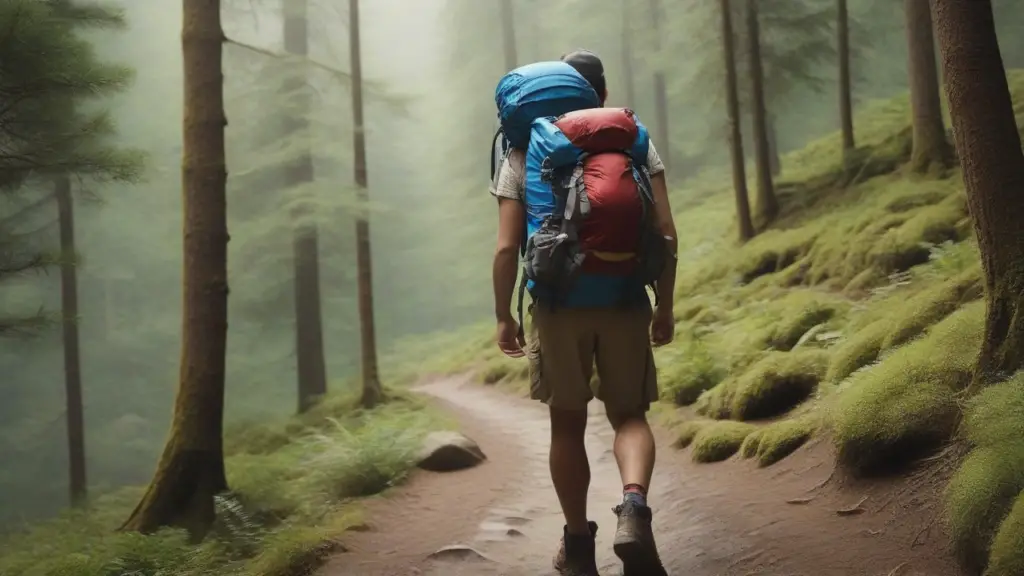
Cooking and Food Preparation
Portable Stove
A portable stove allows you to prepare hot meals efficiently. Consider the type of fuel available and the weight of the stove.
Popular Types of Portable Stoves:
- Canister Stoves: Easy to use and widely available.
- Liquid Fuel Stoves: More versatile but require maintenance.
- Alcohol Stoves: Lightweight and simple but slower cooking times.
Choose a stove that suits your cooking needs and trip length.
Utensils and Cookware
Lightweight and durable utensils and cookware are essential for meal preparation. Look for compact designs that pack easily.
Recommended Items:
- Lightweight Pot: For boiling water and cooking meals.
- Spork or Spoon: Multipurpose eating utensil.
- Mug: For hot drinks and soups.
- Cutting Board: Small, foldable design for food prep.
Investing in quality cookware can make meal preparation more enjoyable.
Food and Nutrition
Proper nutrition is vital for maintaining energy levels during your trip. Plan meals that are calorie-dense and easy to prepare.
- Breakfast: Instant oatmeal, granola bars, dried fruit.
- Lunch: Tortillas, peanut butter, trail mix.
- Dinner: Freeze-dried meals, pasta, rice.
- Snacks: Nuts, jerky, chocolate.
Pro Tip: Pack extra snacks for unexpected delays or increased appetite due to strenuous activity.
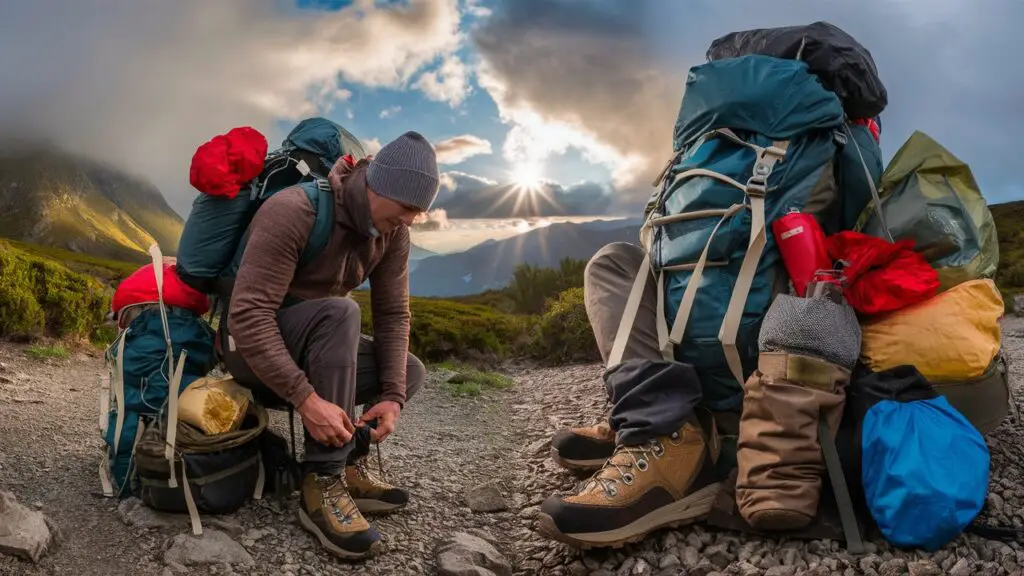
Hydration Essentials
Hydration System
Staying hydrated is crucial during any backpacking trip. Carry a hydration bladder or water bottles, aiming for at least 2 liters per day.
- Hydration Bladder: Convenient for sipping water while on the move.
- Water Bottles: Durable and easy to fill at natural water sources.
A combination of both can provide flexibility and ensure you always have access to water.
Water Purification
Natural water sources may not always be safe to drink. Carry a water purification system to avoid illness.
Methods of Water Purification:
- Filters: Remove bacteria and protozoa but not viruses.
- Chemical Treatments: Tablets or drops that kill pathogens.
- UV Purifiers: Use UV light to neutralize harmful organisms.
Always carry a backup method in case your primary system fails.
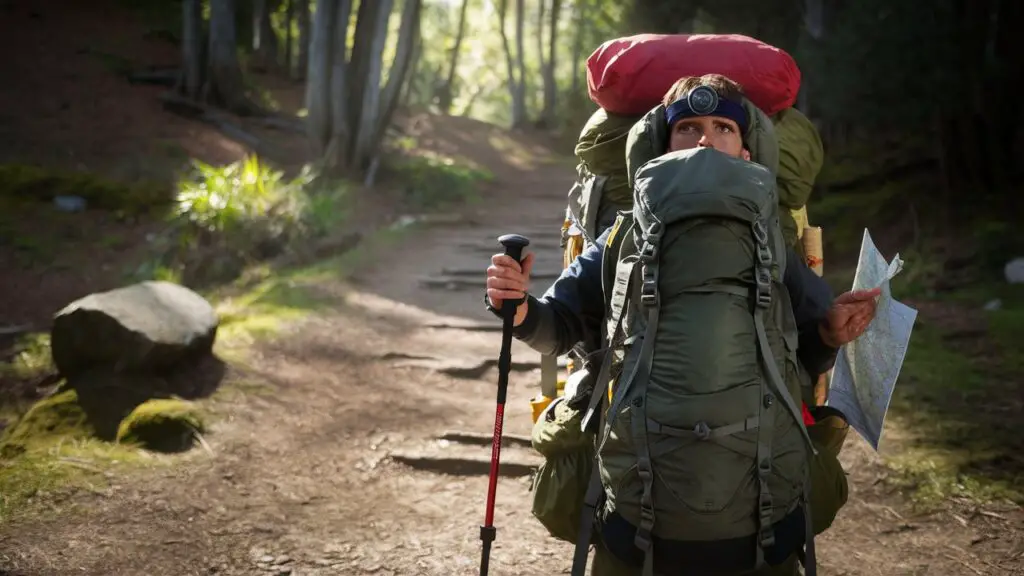
Navigation and Safety
Maps and Compass
Even in our digital age, carrying a physical map and compass is essential. Electronic devices can fail or run out of battery.
- Topographic Maps: Provide detailed terrain information.
- Compass: Crucial for orienting yourself and navigating accurately.
Practice basic navigation skills before your trip to ensure you can use these tools effectively.
First Aid Kit
Accidents happen. A comprehensive first aid kit can be a lifesaver in emergencies.
Essential Items:
- Bandages and Gauze: For treating cuts and scrapes.
- Antiseptic Wipes: To clean wounds.
- Pain Relievers: Ibuprofen, acetaminophen.
- Blister Treatment: Moleskin or blister pads.
Tailor your first aid kit to your specific needs and the length of your trip.
Multi-tool and Repair Kit
A multi-tool and repair kit can help fix minor gear issues on the trail.
- Multi-tool: Includes knife, pliers, screwdriver.
- Repair Kit: Duct tape, sewing kit, patch kits for gear.
Having these tools can save you from bigger problems down the line.
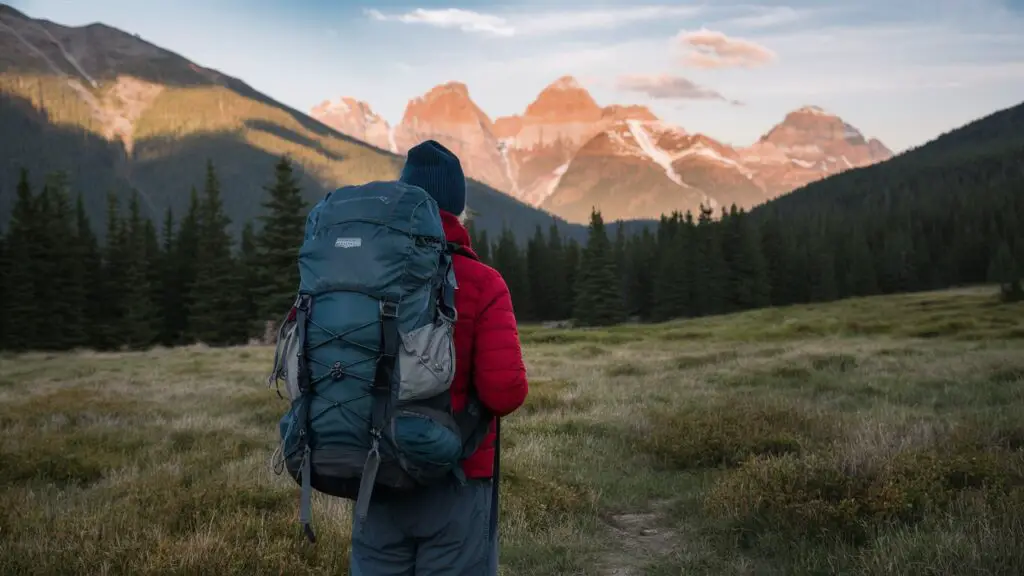
Personal Hygiene and Health
Toiletries
Essential toiletries ensure you stay clean and comfortable.
Basic Items Include:
- Biodegradable Soap: For washing dishes and yourself.
- Toothbrush and Toothpaste: Compact design.
- Toilet Paper: Waterproof storage.
- Hand Sanitizer: Quick and easy sanitation.
Packing the right toiletries ensures good hygiene without overloading your pack.
Insect Protection
Nothing ruins a trip faster than incessant bug bites. Pack insect protection to keep pests at bay.
- Insect Repellent: DEET or natural alternatives.
- Mosquito Net: For sleeping in buggy areas.
- Protective Clothing: Long sleeves and pants treated with
Sun Protection
Protecting yourself from UV rays is crucial for avoiding sunburn and long-term skin damage. Essential sun protection items include:
- Sunscreen: At least SPF 30, broad-spectrum.
- Sunglasses: With UV protection.
- Hat: Wide-brimmed for maximum coverage.
Having these items on your backpacking checklist ensures you stay protected from the sun’s harmful effects.
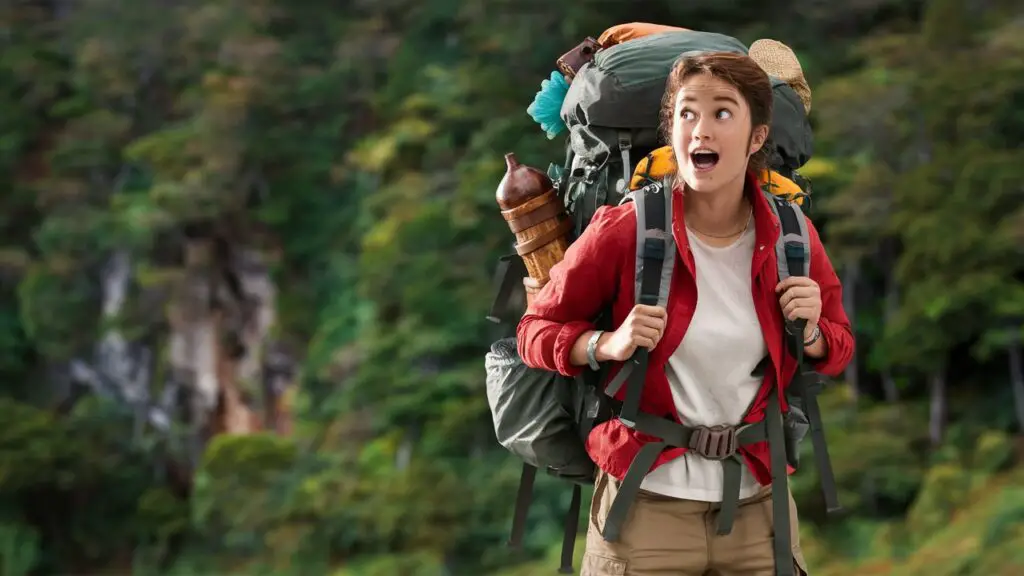
Tech and Gadgets
GPS Device
While traditional navigation tools like maps and compasses are essential, a GPS device provides a valuable backup.
It can help you pinpoint your location with accuracy, making navigation easier, especially in unfamiliar terrain.
Benefits of a GPS Device:
- Accuracy: Pinpoints your exact location.
- Waypoints: Allows you to mark and find specific spots.
- Tracking: Keeps track of distance traveled and your route.
Ensure your GPS device is fully charged and consider carrying extra batteries or a portable charger.
Portable Charger
A portable charger ensures your devices remain powered throughout your trip. This is especially important for long treks where access to electricity is limited.
Options for Portable Chargers:
- Solar Chargers: Ideal for sunny conditions.
- Power Banks: Reliable and can charge multiple devices.
Having a backup power source keeps your electronics operational, providing peace of mind.
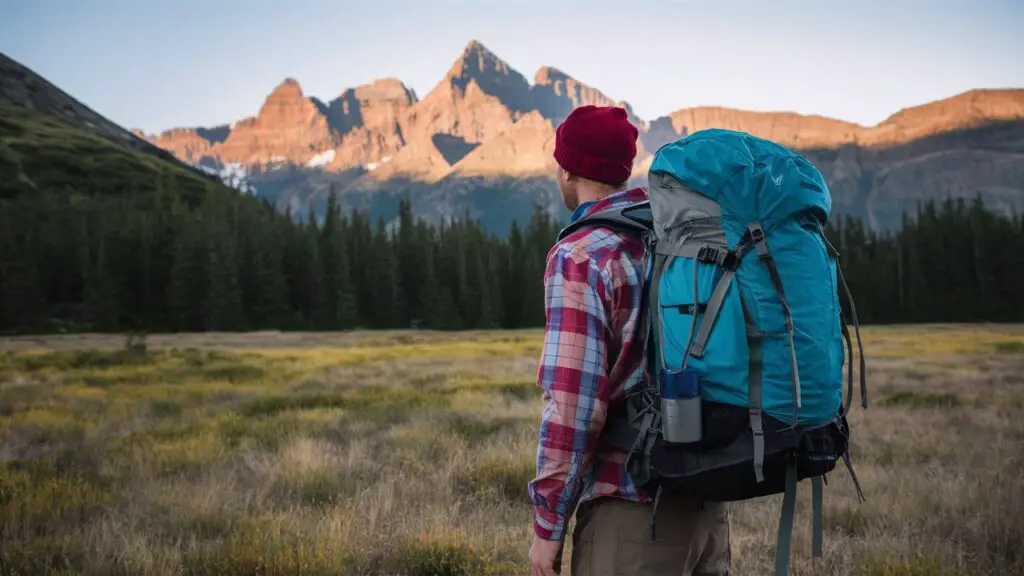
Luxury Items and Extras
While these items are not essential, they can add comfort and enjoyment to your trip.
Camera
Capturing memories is an important part of any adventure. A lightweight, durable camera ensures you can document your journey.
Types of Cameras:
- Action Camera: Durable and suitable for rugged conditions.
- Compact Digital Camera: Lightweight with good image quality.
- Smartphone Camera: Convenient and multifunctional.
Don’t forget extra memory cards and batteries.
Lightweight Chair
A lightweight chair adds comfort to your campsite, especially after a long day on the trail.
Features to Look For:
- Compact: Easily packable.
- Lightweight: Adds minimal extra weight.
- Durable: Can withstand rugged use.
This small luxury can make relaxing at your campsite more enjoyable.
Travel Journal
Documenting your trip in a travel journal can be a rewarding experience and a valuable keepsake.
Benefits of a Travel Journal:
- Memories: Capture thoughts and experiences.
- Planning: Jot down notes for future travels.
- Reflection: A dedicated space for reflection.
A lightweight notebook and pen are all you need to start journaling your adventure.
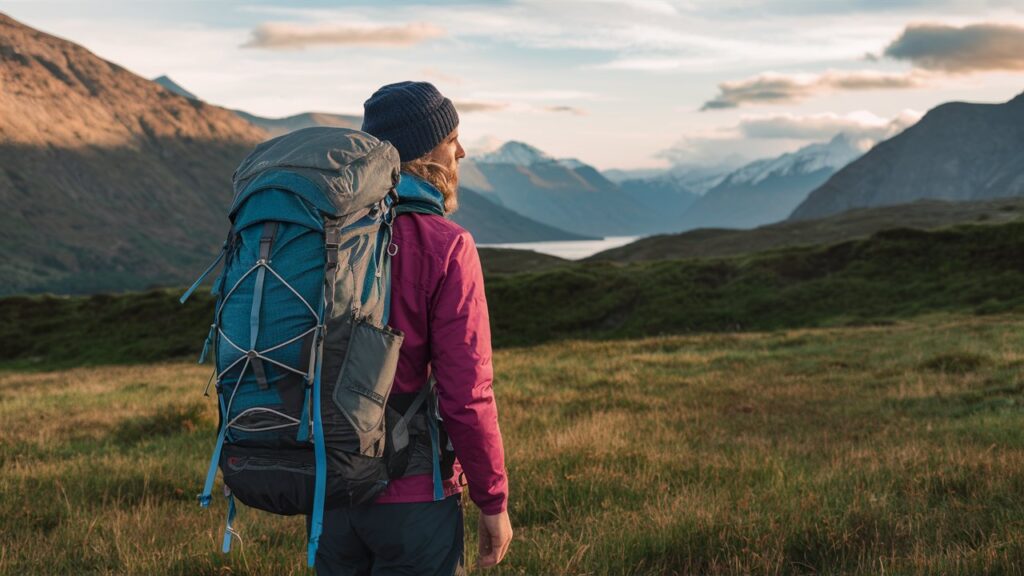
Tips for Packing Your Backpack
Efficiently packing your backpack can make carrying it more comfortable and accessible. Here are some tips:
- Distribute Weight Evenly: Heavier items should be close to your back to maintain balance.
- Accessible Items: Keep items you frequently use, like snacks and maps, in easily accessible pockets.
- Organization: Use stuff sacks or dry bags to organize items and keep them dry.
Visualize your pack as having three zones: the bottom for sleeping gear (sleeping bag and pad), the middle for heavier items (food, cooking gear), and the top for lighter items (clothing, rain gear).
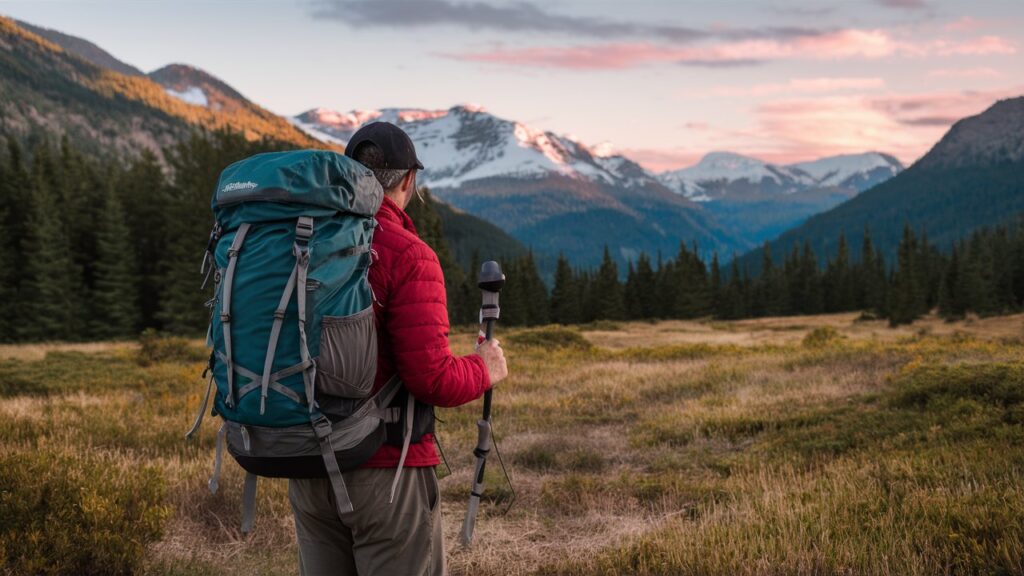
Frequently Asked Questions
-
How do I choose the right backpack?
Selecting the right backpack depends on your trip’s duration, the gear you need to carry, and your personal comfort preference. Look for features like adjustable straps, padded hip belts, multiple compartments, and a capacity appropriate for your trip length.
-
What should I do if I forget an essential item?
If you realize you’ve forgotten an essential item, assess if you can improvise or do without it. In some cases, other hikers or local stores might be able to help. Always double-check your backpacking checklist before departure to minimize this risk.
-
How do I stay safe while backpacking?
Safety is paramount while backpacking. Always inform someone of your itinerary, carry a first aid kit, know basic navigation skills, and be aware of your surroundings. Familiarize yourself with local wildlife and weather conditions, and ensure you have a means of communication in case of emergencies.
Conclusion
A well-prepared backpacking checklist is your key to a successful and enjoyable adventure. By following this comprehensive guide, you’ll be ready for whatever the trail throws your way.
Planning and packing correctly ensures you have all the essentials while avoiding unnecessary weight.
Remember, the goal is to be well-prepared while keeping your load manageable. Tailor this checklist to suit your specific adventure’s needs, and you’ll be set for an unforgettable journey. Happy backpacking!

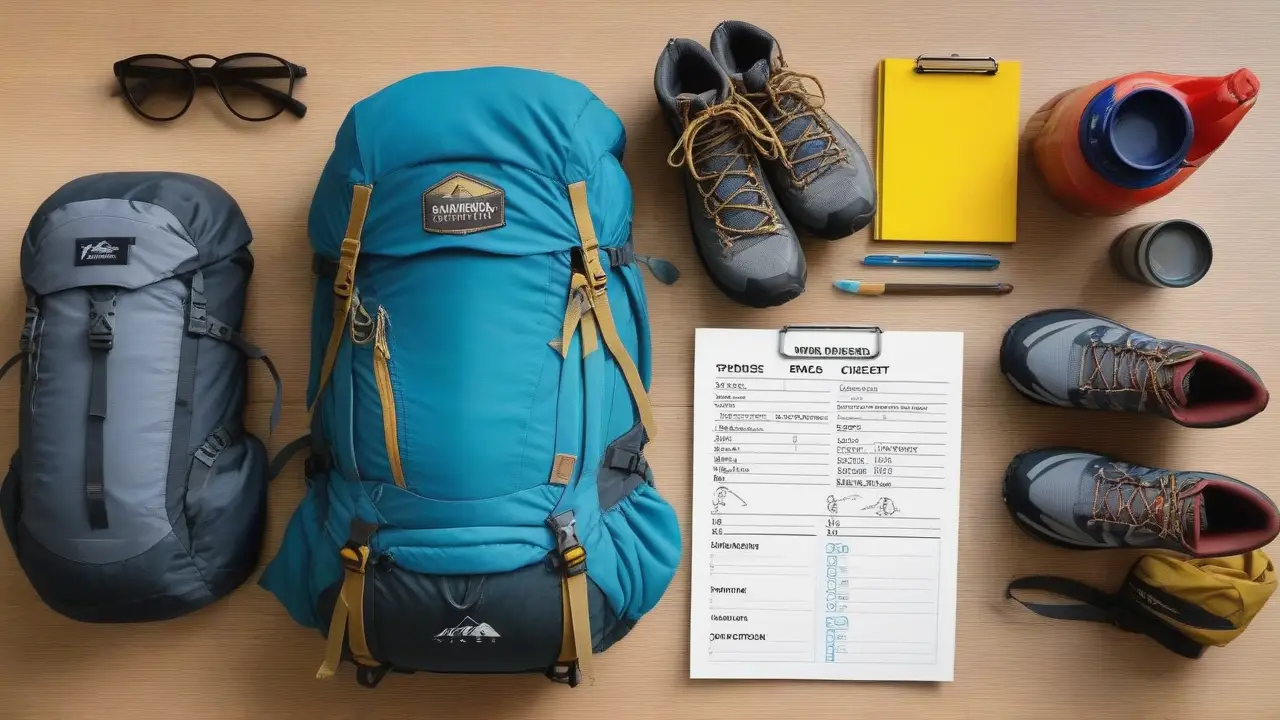
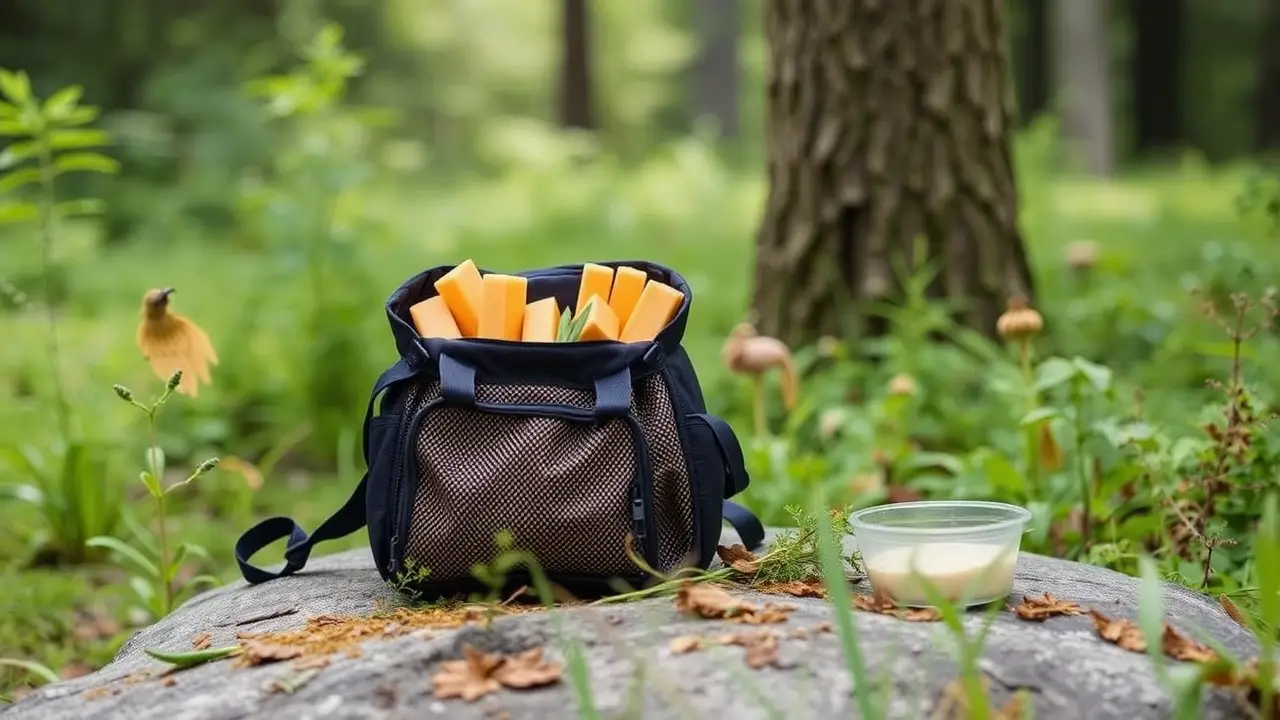
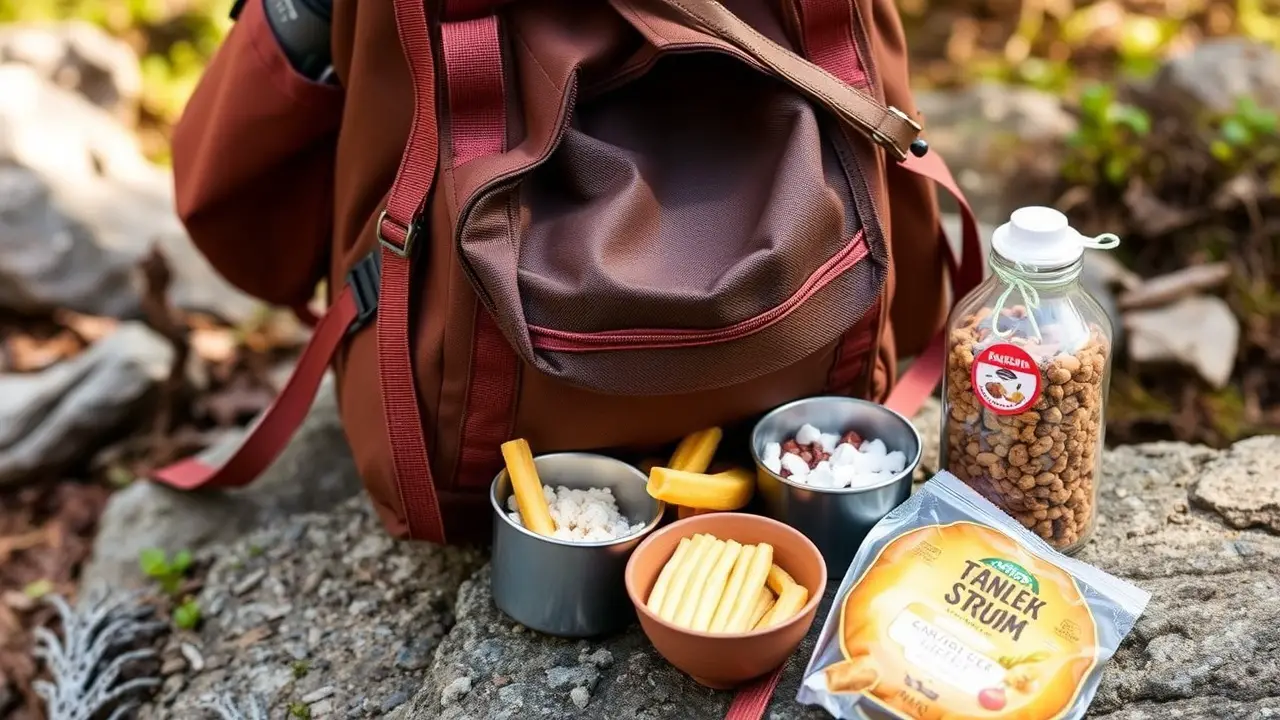
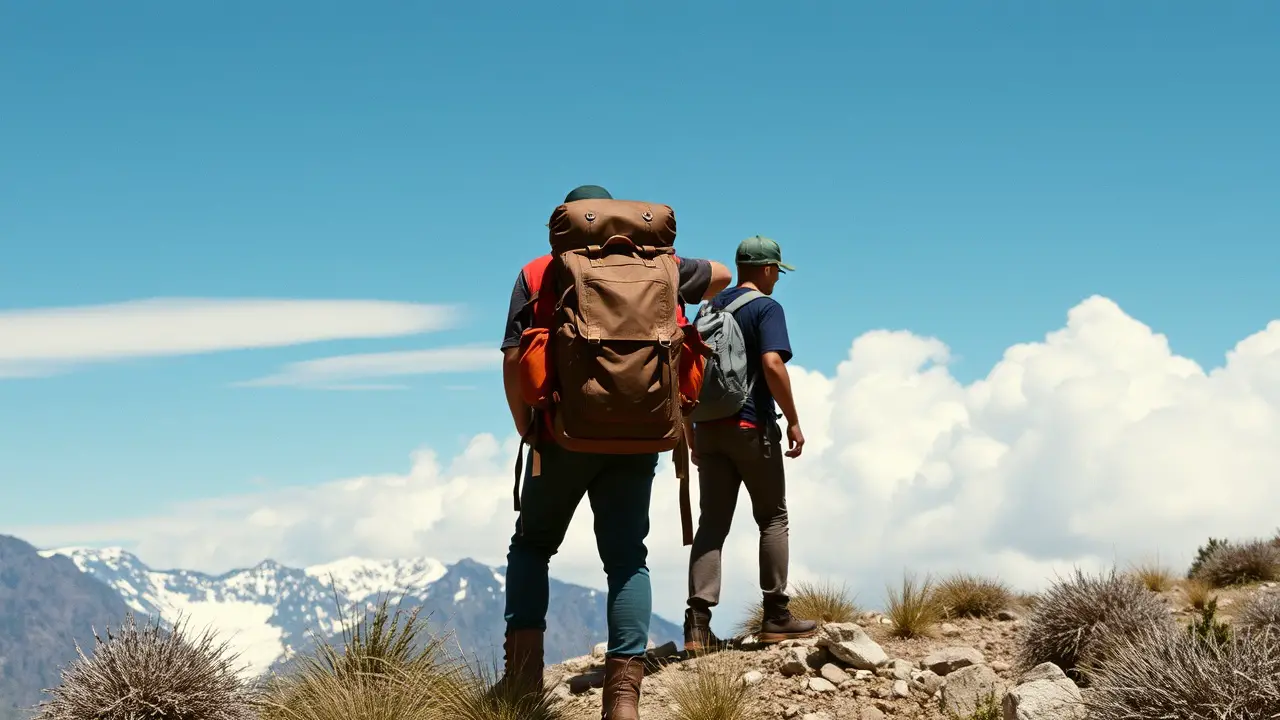
Leave a Reply